.
JFK files: As Donald Trump looks to release classified documents, last living link to assassination drops bombshell
Antonio Veciana, 88, has authored a memoir that promises to shed light on one of the greatest mysteries of our time
JFK files: As Donald Trump looks to release classified documents, last living link to assassination drops bombshell
Antonio Veciana, 88, has authored a memoir that promises to shed light on one of the greatest mysteries of our time
Youssef El-Gingihy
@ElGingihy
http://www.independent.co.uk/news/long_reads/john-f-kennedy-assasination-cuba-cia-lee-harvey-oswald-antonio-veciana-a7957481.html
President Donald Trump has said he plans to allow the release of classified government documents about the assassination of President John F Kennedy. The deadline set in law by US Congress mandating the public release of the secret files has been set for this Thursday. The documents, which include FBI and CIA reports, may or may not confirm the revelations in a book published earlier this year: a first-hand insider’s account of the CIA’s plots against Kennedy, Castro and Che Guevara.
Antonio Veciana is an 88-year-old great-grandfather living out his retirement in Miami. Yet in his prime, he was at the heart of some of the most momentous events in modern US history. These included the CIA’s anti-Castro operations and anti-communist covert plans in Latin America, as well as inadvertently witnessing the meeting of a top CIA operative with Lee Harvey Oswald prior to the assassination of President John F Kennedy.
Veciana has co-written his memoir Trained to Kill with veteran Pulitzer-winning journalist Carlos Harrison. He went public with his astonishing claims at a conference held in 2014 to mark the 50th anniversary of the Warren Commission report. The commission had been set up by President Johnson, and arrived at the official conclusion that Oswald was the lone assassin in the murder of JFK.
Veciana started out as a bank accountant in Cuba and initially aligned himself with Castro’s guerrilla war, participating in the overthrow of despised dictator Batista – who was backed by the US. Batista presided over extensive corruption while keeping his own people in a state of abject poverty.
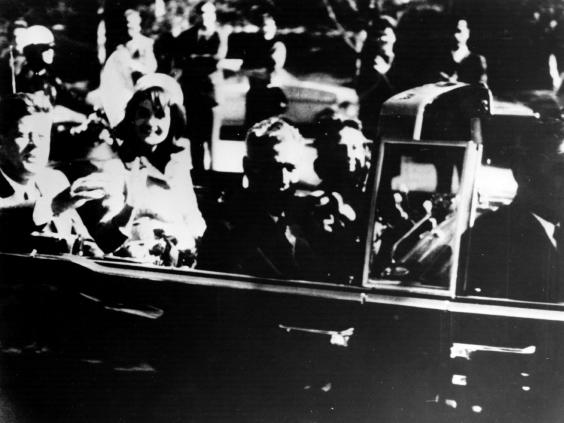
22 November, Dallas, Texas, 1963: JFK and his wife Jacqueline minutes before the assassination (Getty)
The direction of the Cuban revolution was not inevitably destined for socialism. However, when Washington refused to deal with Castro following his victory, he was forced to turn to the Soviet Union. Veciana would himself turn against Castro, and was recruited by the CIA in their covert action operations. This secret war, waged relentlessly against Cuba, consisted of economic and industrial sabotage, as well as acts of terrorism. Veciana concedes that he was an unlikely terrorist: a skinny, asthmatic, insecure youngster.
Once his prominence brought him to the attention of Cuban security services, Veciana had no option but to flee for Miami on a boat. With funding and support from the CIA, he founded Alpha 66, which became one of the most notorious Cuban exile groups. In 1963, Veciana and Alpha 66 would make headlines all over the world after holding a press conference claiming responsibility for an attack on a Russian vessel in Cuban waters.
According to Richard Helms, who would later become director of the CIA, the Kennedy brothers pushed hard for the overthrow of Castro. However, JFK had been ambivalent about the 1961 Bay of Pigs invasion, and withheld air cover – thereby guaranteeing its miserable failure with scores of fighters killed and over a thousand taken prisoner.
Yet David Talbot argues in The Devil’s Chessboard – a biography of legendary CIA spymaster Allen Dulles, which reads more like a Hollywood thriller – that the Bay of Pigs was deliberately designed to fail, in order to force JFK to acquiesce to it. This event, early in the Kennedy presidency, earned the undying animosity of diehard anti-Castro exiles such as Veciana, and their virulently anti-communist CIA handlers including future Watergate burglar Howard Hunt and David Sanchez Morales.
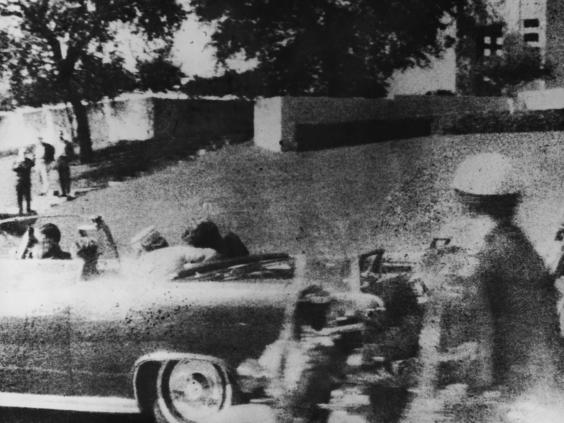
Shots heard around the world: the murder sent shockwaves throughout the US and wider global population (Getty)
Such animosity only intensified within the ranks of the CIA and the Pentagon, with the refusal of JFK to invade Cuba at the height of the 1962 missile crisis. The ensuing agreement with Khrushchev not to invade Cuba, in return for the withdrawal of Russian missiles from the island, was effectively strike three for the young President. As far as hardliners in the military industrial complex were concerned, the prospect of coexistence with communism was untenable.
JFK was cognisant of such dangers, pushing Kirk Douglas to produce a film version of political thriller Seven Days in May about a military coup d’état in the US. Robert Kennedy would later confess that, at the height of the missile crisis, they sent word to the Russians that they might not be able to control their gung-ho generals. It is worth recalling that French President Charles De Gaulle survived assassination attempts and a military coup over his decision to grant Algeria independence.
In 1975 (during the aftermath of Watergate), the Church Committee revealed the FBI’s Counter Intelligence Programme of mass surveillance and infiltration of anti-war and civil rights groups, as well as the CIA’s Executive Action assassination apparatus, code-named ZR/Rifle. As a result, the House Select Committee on Assassinations (HSCA) was set up, reopening investigations into the murders of JFK and Martin Luther King.
Gaeton Fonzi was one of the Congressional investigators for the HSCA when he managed to track down Veciana. Fonzi did not fully disclose his role, merely stating that he was investigating the links between Cuban exile groups and intelligence agencies. As Fonzi relates in his breathless, page-turning account The Last Investigation, Veciana unburdened himself to Fonzi, revealing that his CIA handler went by the code name of Maurice Bishop. He had even witnessed an extraordinary meeting in Dallas in September 1963, two months before the assassination of President Kennedy.
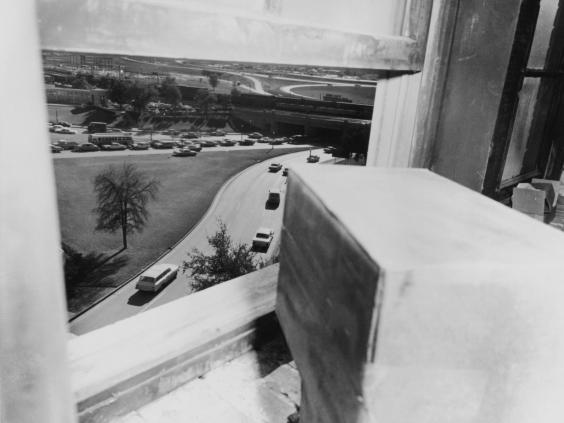
The window of the Texas School Book Depository in Dallas, from which Lee Harvey Oswald is thought to have fired (Getty)
Veciana had turned up early for the meeting with Bishop at the towering Southland Centre. He saw Bishop with a pale young man, who was introduced as Lee – although this man did not utter a single word. It was only two months later that he recognised the television and newspaper pictures of Lee Harvey Oswald – the alleged assassin – as the man he had met with Bishop.
Veciana realised it would be prudent not to speak of what he had seen. Throughout this revelatory conversation, Fonzi tried hard to act nonchalant – but he later admitted that in his mind he fell off his chair. Veciana was essentially confirming long-held suspicions directly linking the CIA to the JFK assassination.
Fonzi now dedicated his mission to unmasking the true identity of Maurice Bishop, enlisting a professional police artist to sketch a portrait of Bishop based on Veciana’s description. By chance, one of Fonzi’s committee colleagues, Senator Richard Schweiker, suggested that the picture had an unerring resemblance to CIA operative David Atlee Phillips, who had been running anti-Castro operations and would later rise to the illustrious position of the CIA’s head of the Western Hemisphere division. Fonzi eventually arranged a surprise meeting in an attempt to confirm this. He took Veciana along to a meeting of the Association of Former Intelligence Officers – a lobbying group Phillips had founded after retiring in 1975.
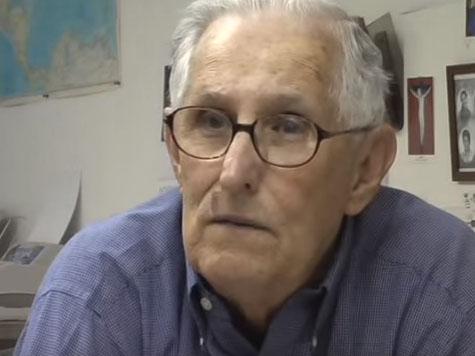
Antonia Veciana, who could be the key to the last century’s most compelling conspiracy (Youtube)
When confronted, Phillips denied any knowledge of having ever met Veciana, in spite of his high-profile status as the leader of a major Cuban exile group. In turn, Veciana denied that Bishop was Phillips – but their body language betrayed a different story. Veciana could not take his eyes off Phillips, whilst Phillips was nervous and shaken. The HSCA compelled both Phillips and Veciana to testify.
Veciana already suspected Bishop as being behind the trumped-up charges which landed him in jail on bogus narcotics charges, in order to curtail the former’s unsanctioned operations. Fonzi would eventually resolve that Veciana was using the HSCA in an effort to protect himself from the CIA, making it clear that he was capable of damaging exposures.
The final HSCA report, published in 1979, would conclude that there was a probable conspiracy to assassinate Kennedy partially based on acoustic analysis of Dictabelt recordings revealing two gunmen. This contradicted the Warren Commission version of a lone gunman, but did not confirm the identity of any supposed conspirators.
A few months later, Veciana was shot in the head and left for dead – but somehow survived. He remains unsure of the perpetrators, but was aware that he was now a liability in the aftermath of the HSCA investigation. However, he also suspected that Castro’s G2 intelligence was working its way through a hit-list of state enemies.
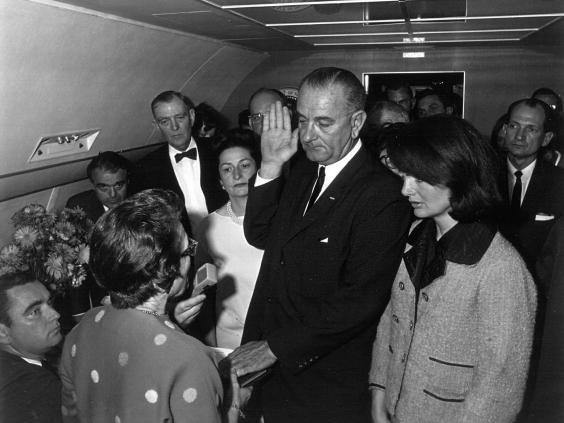
Lyndon B Johnson takes the oath of office as president, shortly after the assassination (Getty)
In any case, he maintained a vow of silence in his desire for self-preservation. Until now, that is.
Veciana is at the end of his life and his wife has passed away. His children have grown up. He is ready to exorcise the ghosts of the past. Veciana finally concedes that he lied to Gaeton Fonzi. Maurice Bishop was indeed, as long suspected, David Atlee Phillips – the man he saw with Oswald.
As David Talbot points out in the foreword to the book, the classic anti-conspiracy argument is that somebody would have spoken. Yet Veciana is simply the last in a long line of whistleblowers, from Oswald’s self-exonerating “I’m just a patsy” to Jack Ruby’s claims of a wider conspiracy, right up to Howard Hunt’s apparent deathbed confession.
So what was really going on? I decided to ask Jefferson Morley, who has interviewed Veciana twice and is one of the pre-eminent historians of the JFK assassination, having written on the subject for several decades. His website JFKfacts.org treats the subject as a live case with developments continuing to unfold. He is the author of Our Man in Mexico, which details the story of Winston Scott (head of the CIA station in Mexico City during this period).
Morley, based in Washington, points out that we now know a cadre of CIA officers, including the “protean” James Jesus Angleton (chief of CIA counter-intelligence 1954-75), had a pre-assassination interest in Oswald. Incidentally, Morley’s forthcoming book is a biography of Angleton, titled The Ghost: The Secret Life of CIA Spymaster James Jesus Angleton. The declassified documents contradict the testimony of Helms and Angleton denying any foreknowledge of Oswald, and revealed that the fingerprints of intelligence were all over this callow twenty-something.
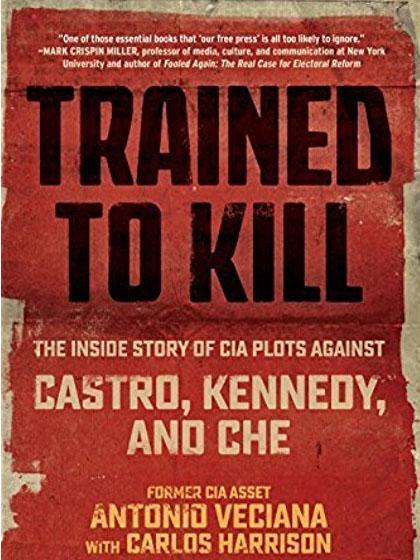
The book promises to shed light on one of the greatest mysteries of our time
These CIA officers had what Morley describes as a “granular” knowledge of the beliefs, movements and history of the alleged assassin, going back at least to his time as an apparent “defector” to the Soviet Union. In fact, as Morley emphasises, the information pertaining to Oswald all went back to Angleton’s office rather than representing a failure to connect the dots.
Oswald’s biography poses the thorniest questions for the official version. The presidential assassin was immediately portrayed as a fanatical communist. Yet if this was the case, then it is difficult to explain away his return to the US with no questions asked following his defection to the Soviet Union. In fact, not only did the State department hand back his passport, but it gave him a loan to facilitate his settling down.
Oswald then spent much of 1963 with hardcore anti-communists in New Orleans, such as CIA pilot David Ferrie and ex-FBI turned private eye Guy Banister. Both were involved in anti-Castro ops, as unearthed by the Garrison investigation. Then Oswald was integrated into the White Russian exile community in Dallas. As Oliver Stone points out in his magnum opus JFK, this was a strange way for a Marxist to spend his spare time.
Oswald’s trip to Mexico City in the weeks leading up to the assassination is at the heart of this tangled web. Oswald apparently travelled to both the Cuban and Russian embassies in the Mexican capital, and failed to obtain a visa for travel to Cuba and onwards to the Soviet Union. He supposedly met with Valery Kostikov, who just happened to be a KGB assassinations agent.
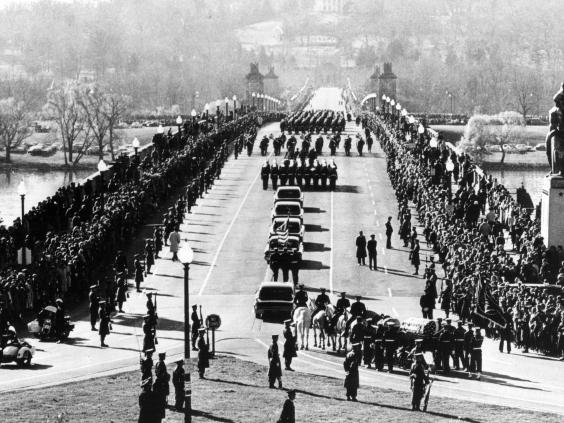
The funeral procession of JFK into Washington: the youngest man elected President, and the youngest to die (Getty)
Yet when the CIA was asked to produce evidence of this trip, the photographs from their round-the-clock surveillance of the embassies were of another man. The official excuse was that the cameras were either turned off or not working. Furthermore, taped recordings of Oswald’s phone conversations were conveniently destroyed.
It seems more plausible that Oswald was a CIA asset, starting with his stationing at the Atsugi base in Japan, from where the top secret U2 spy planes originated. It appears that his mission to the USSR saw him being dangled as part of Angleton’s hunt for a KGB mole at the highest levels of the CIA.
We may never know exactly what he was up to in New Orleans and Dallas. It has been suggested that he was also a paid FBI informant, as first alleged in the early days of the Warren Commission’s investigation. In which case, he may have been asked to infiltrate pro-Cuban domestic groups.
In those final mysterious weeks of his short life, what exactly did this gauche young man think he was doing? Was he even being asked to penetrate an assassination plot on the President in an effort to sabotage it?
Some have speculated that Oswald was being sheep-dipped as a Marxist as an elaborate cover story by the assassination planners wishing to pin the blame on Castro and the Soviets, in an attempt to catalyse long-sought-after regime change in Cuba. This might explain the role of Bishop/Phillips – considered a master of black ops and propaganda – as Oswald’s purported handler, and that infamous meeting so close to the assassination.
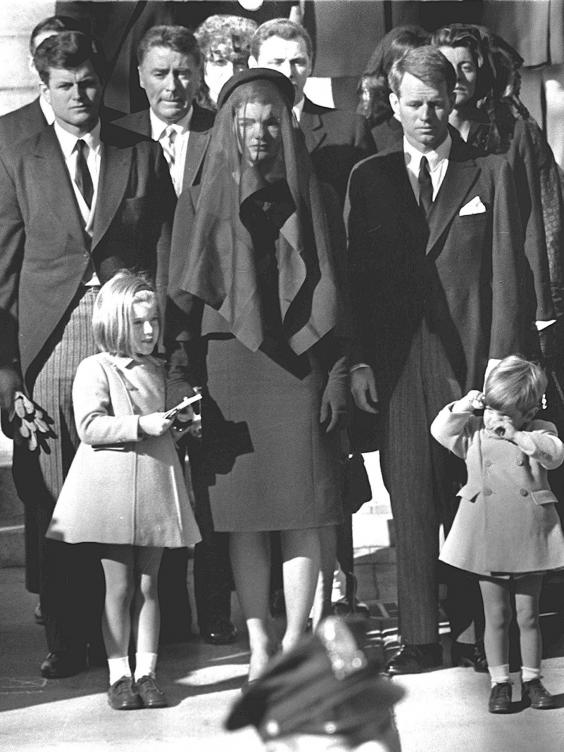
Jackie at the funeral: Jacqueline Kennedy, her two children Caroline and John Jr, as well as brothers-in-law Ted (left) and Robert (right) (Getty)
If all of this sounds far-fetched then one has to only consider the official existence of Operation Northwoods – a false flag 1962 Pentagon plan prepared by the Joint Chiefs of Staff to perpetrate terrorist attacks on US soil in order to justify the invasion of Cuba.
The ingenuity here is that the same logic was used to close down investigation channels; with Lyndon Johnson in effect tasked Chief Justice Earl Warren’s eponymous commission to arrive at the conclusion of a “lone nut” assassin. The reason? Based on Hoover’s confidential disclosures of Oswald’s trip to the Soviet embassy in Mexico, the morning after the assassination, Johnson believed that a wide-ranging investigation could trigger a third world war.
Over five million pages of documents pertaining to the JFK assassination have already been released. This final batch contains hundreds of files on Phillips, Hunt, Angleton and Helms. It is unlikely that there will be a smoking gun to solve the greatest whodunit of the 20th century.
However, in just a matter of days, we might have the answers to some of these tantalising questions – as long as the agencies do not obstruct their release. Even if they do, the final decision will belong to President Trump – himself an inveterate conspiracy theorist engaged in a self-proclaimed war with the deep state. It’s all set for a showdown, and a dramatic climax to over half a century of intrigue, disinformation and speculation in the ultimate postmodern labyrinth. The final countdown begins.
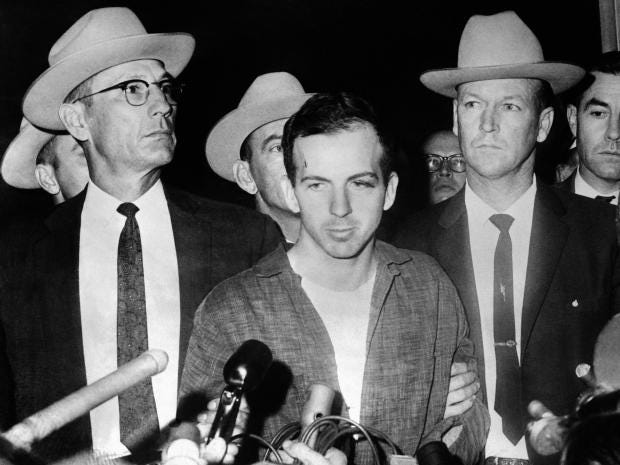
No comments:
Post a Comment